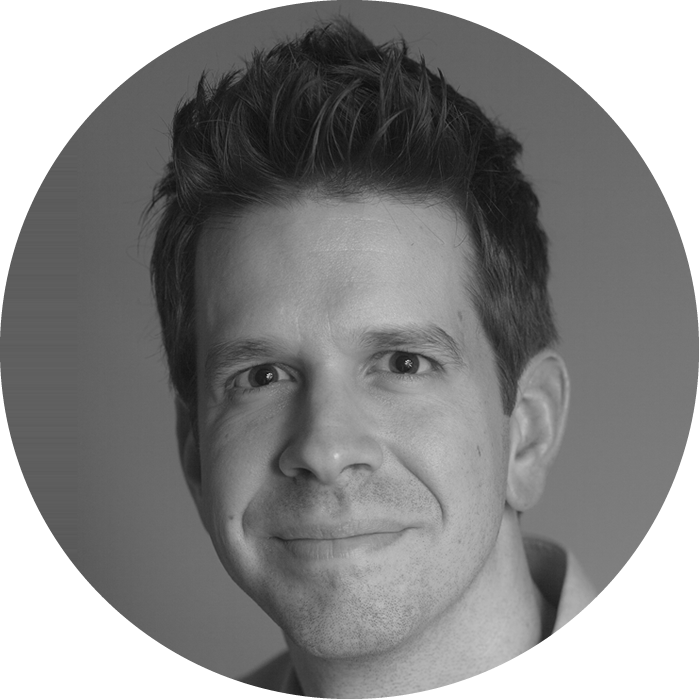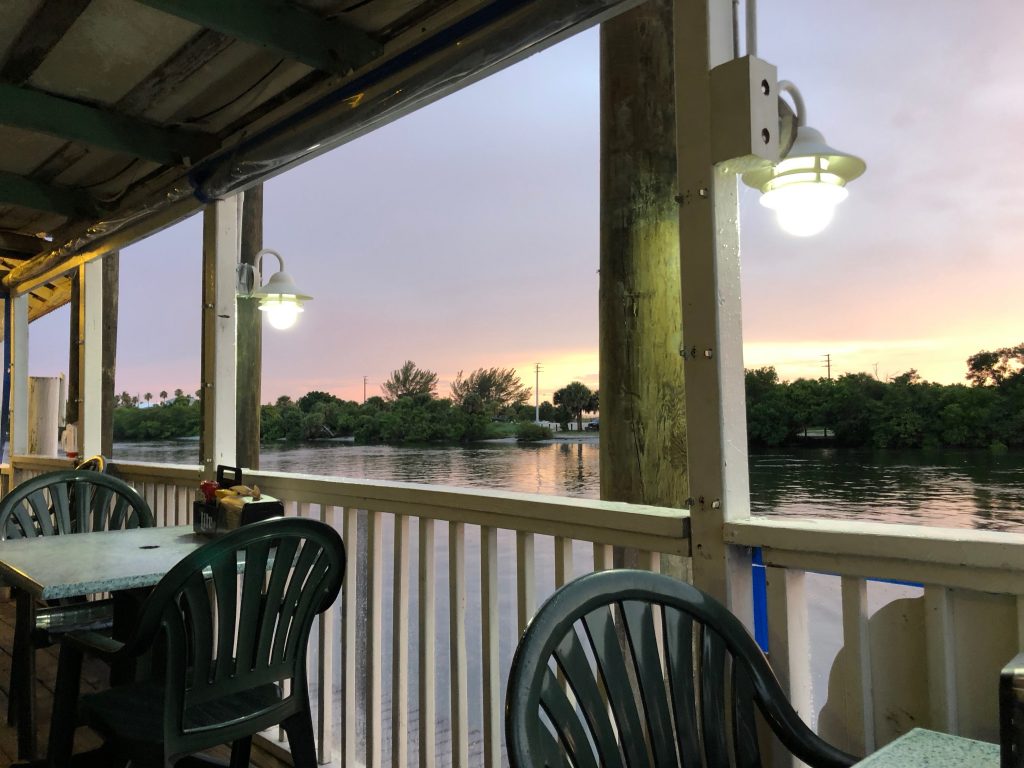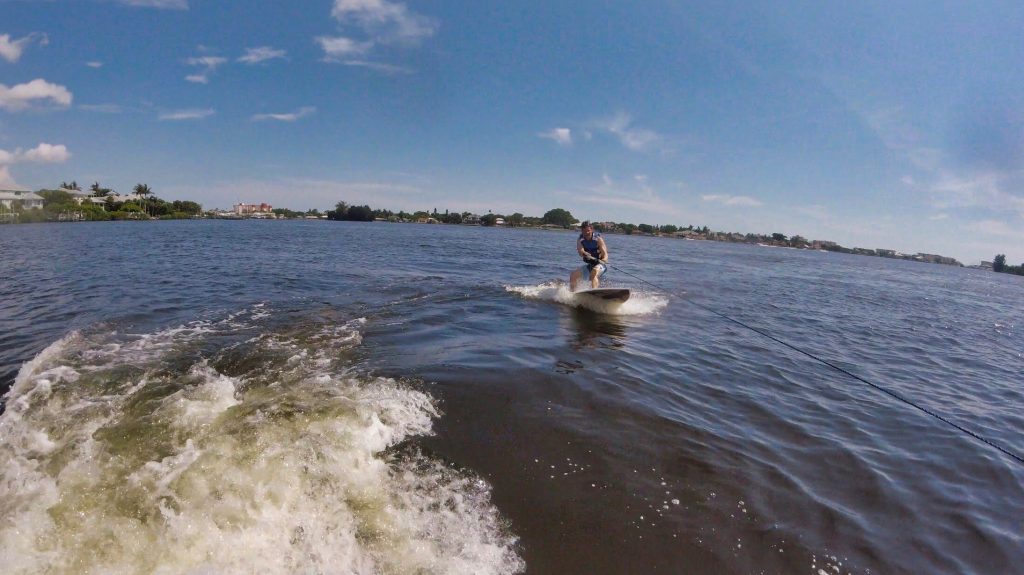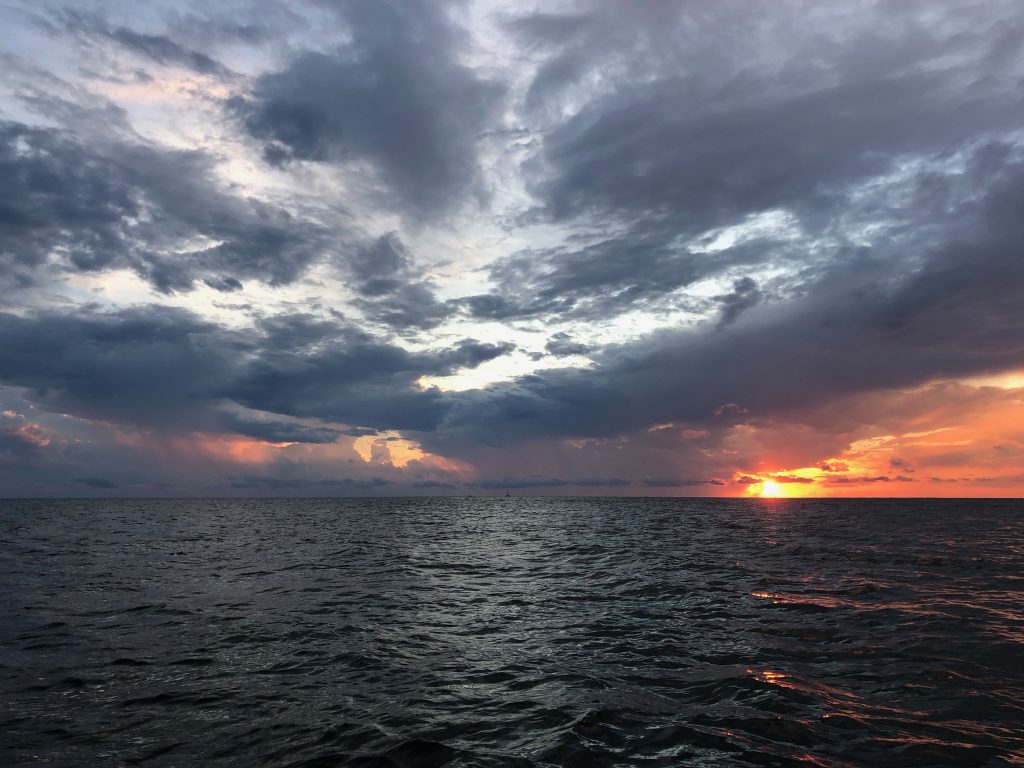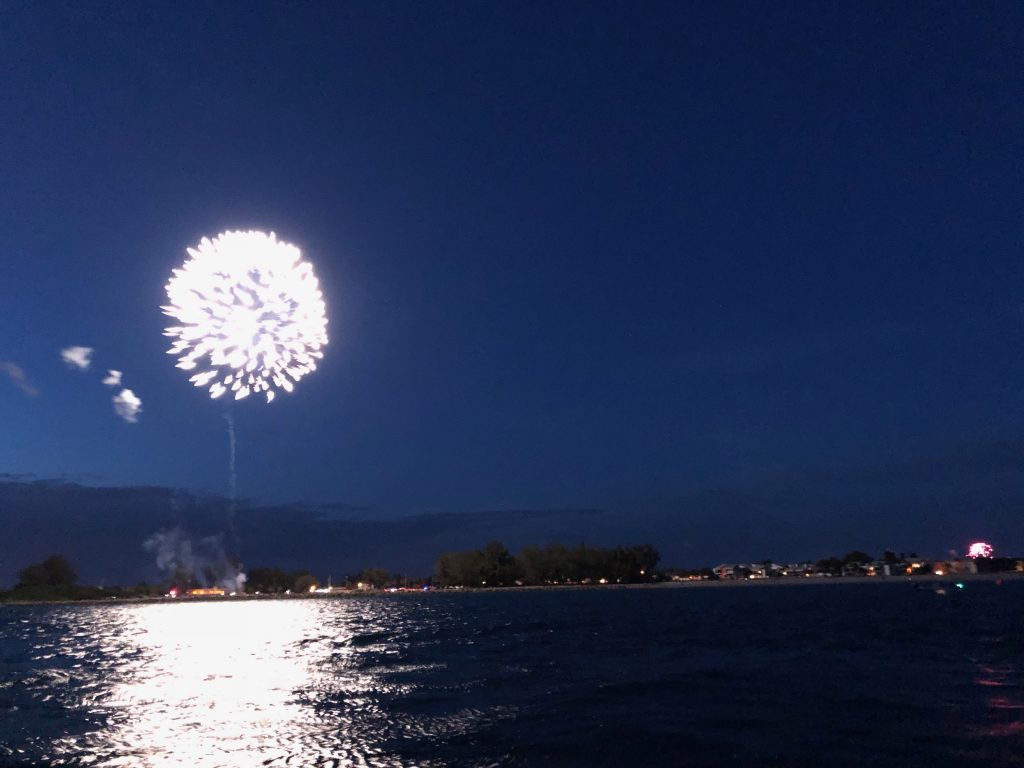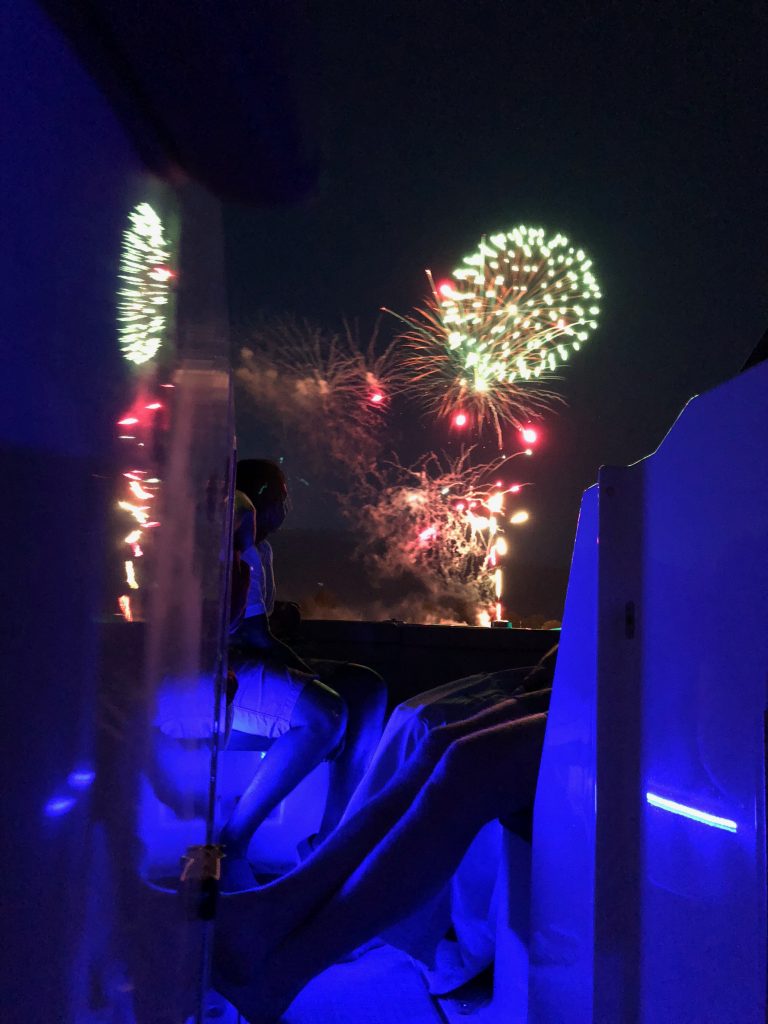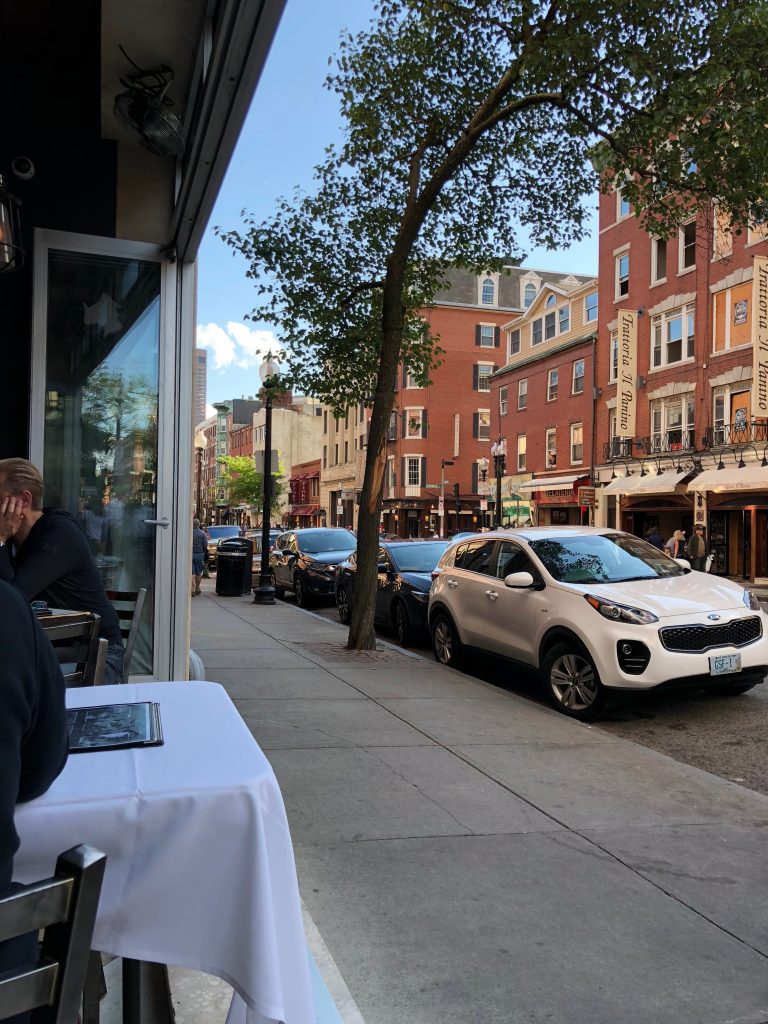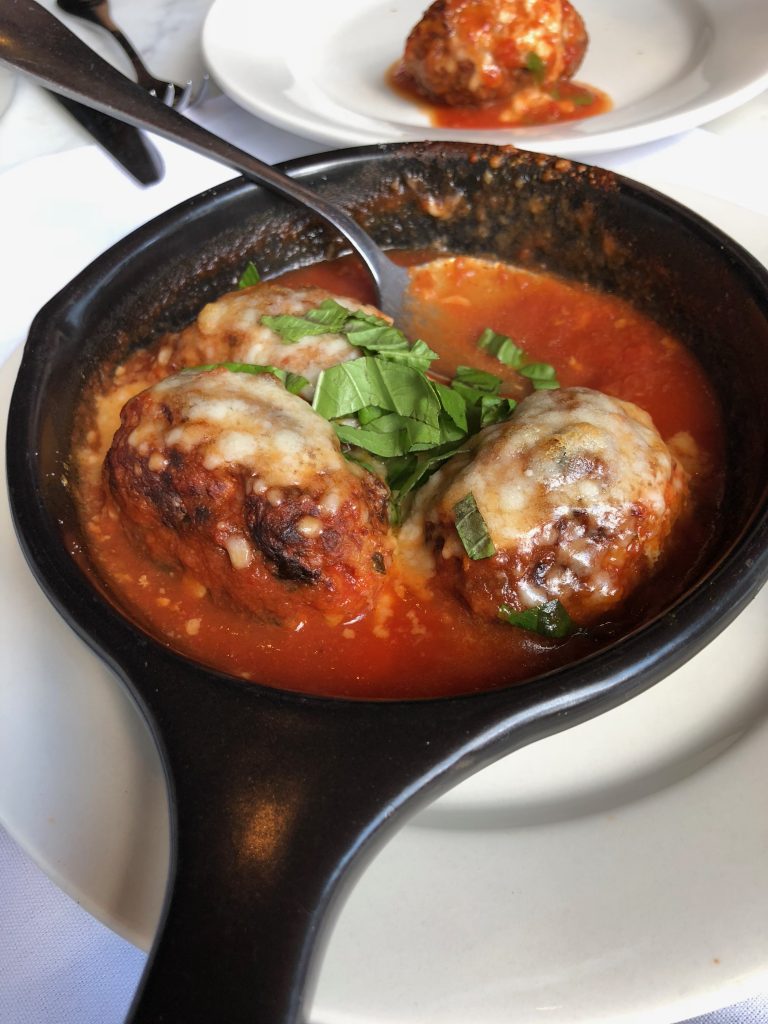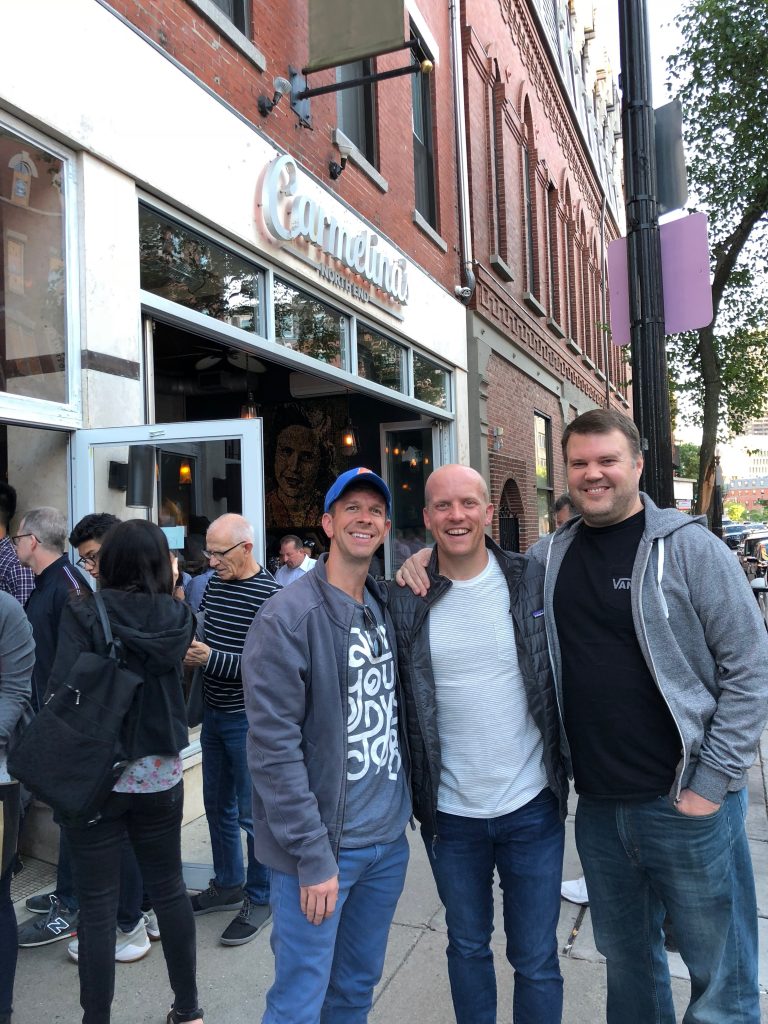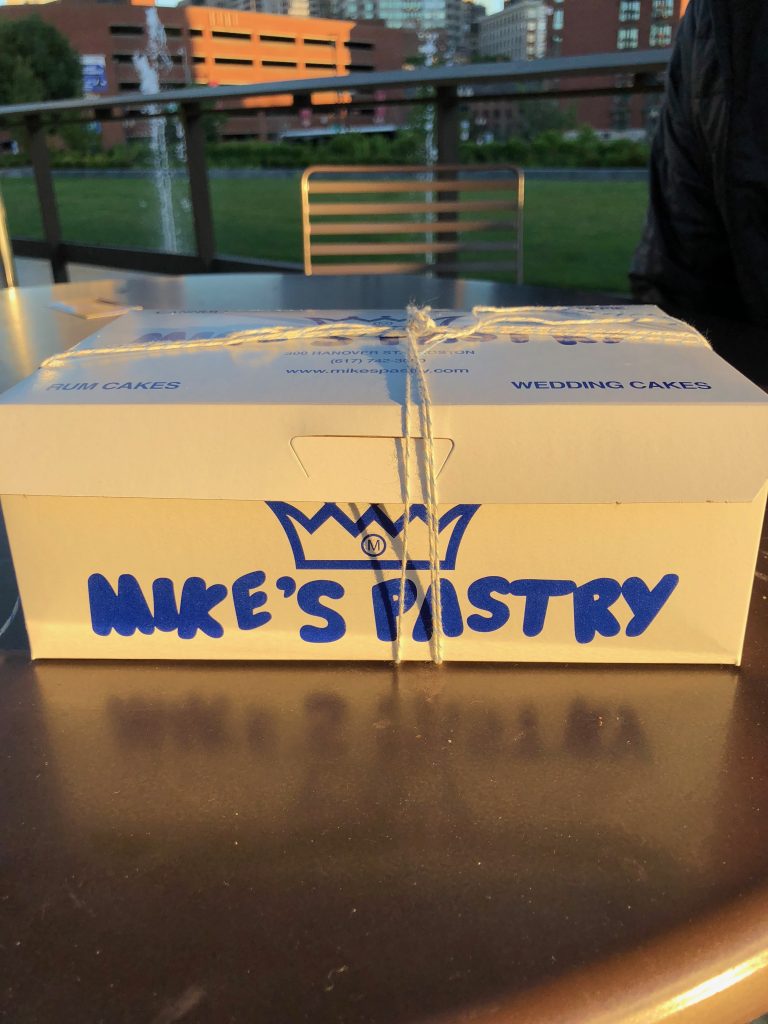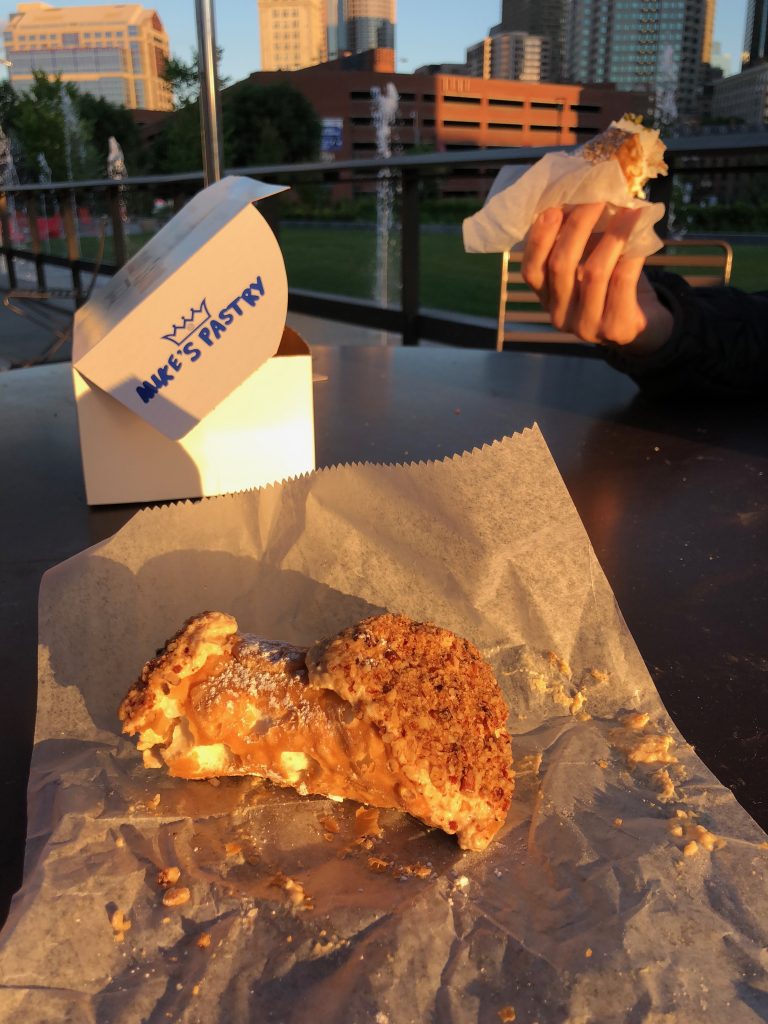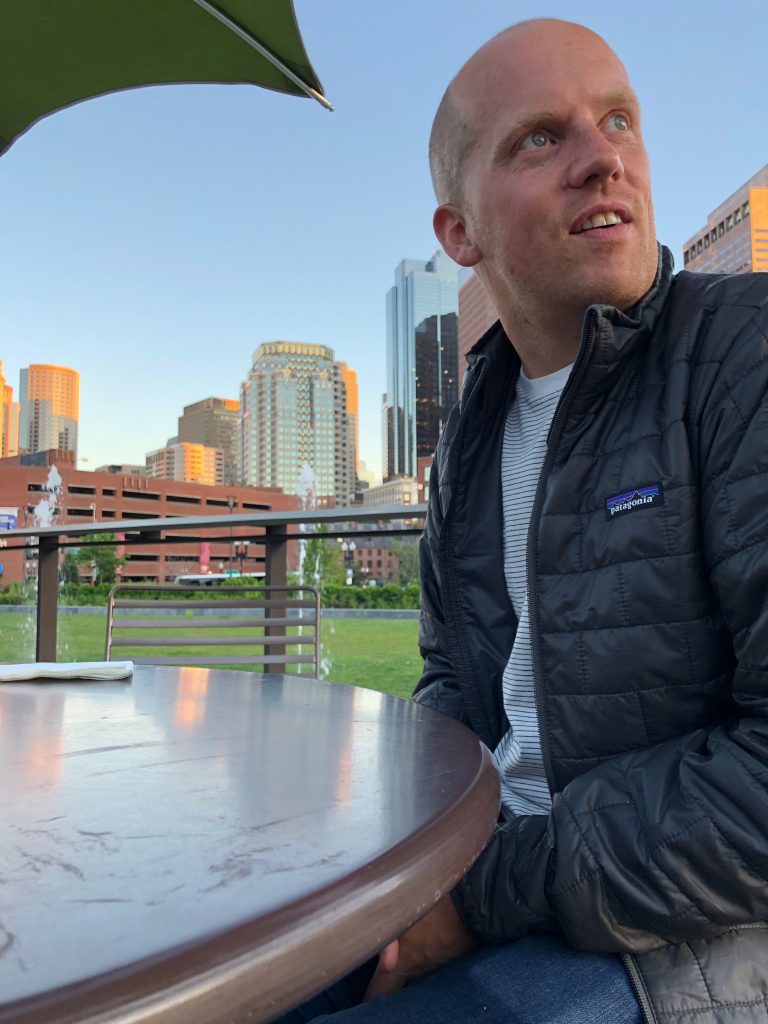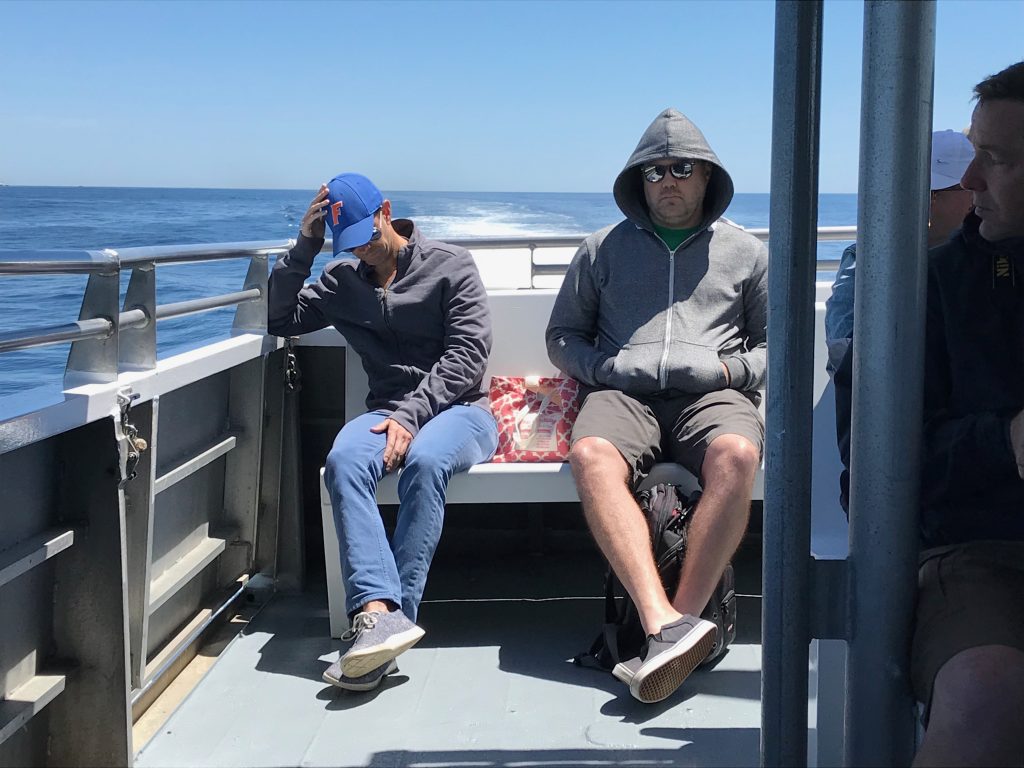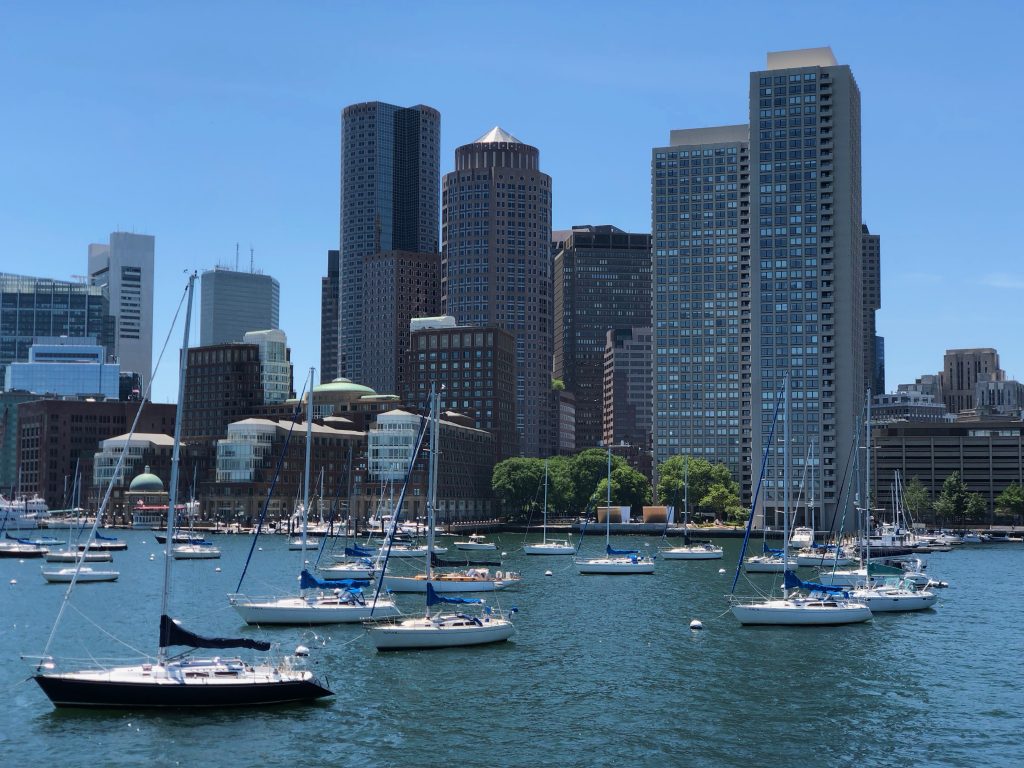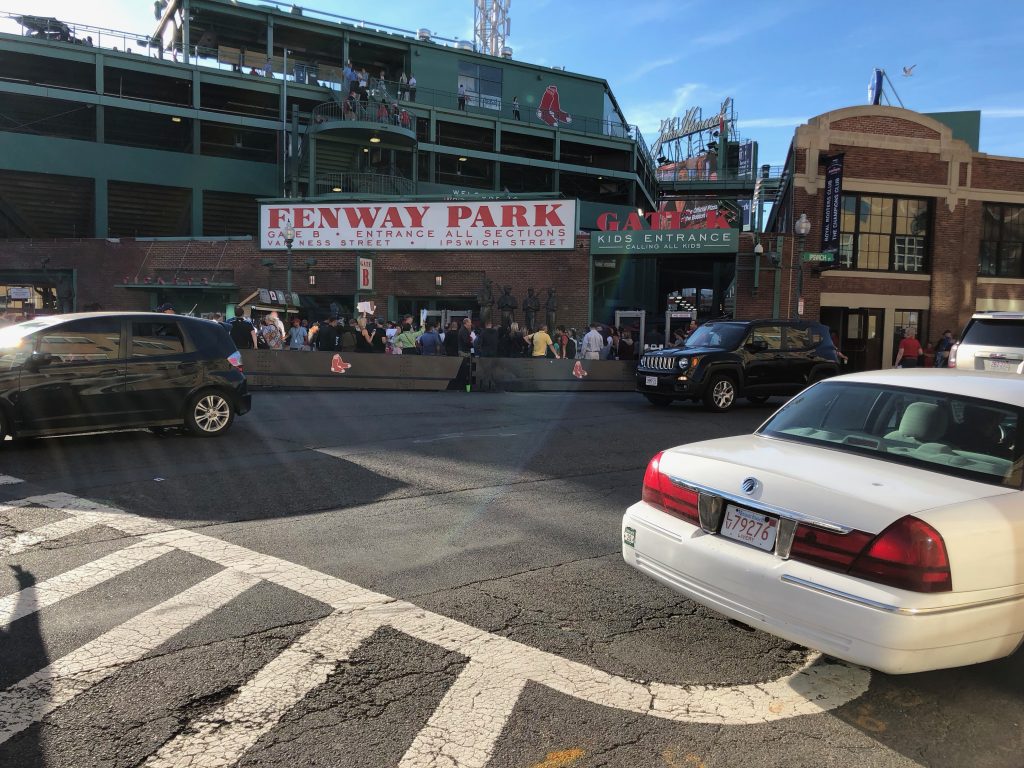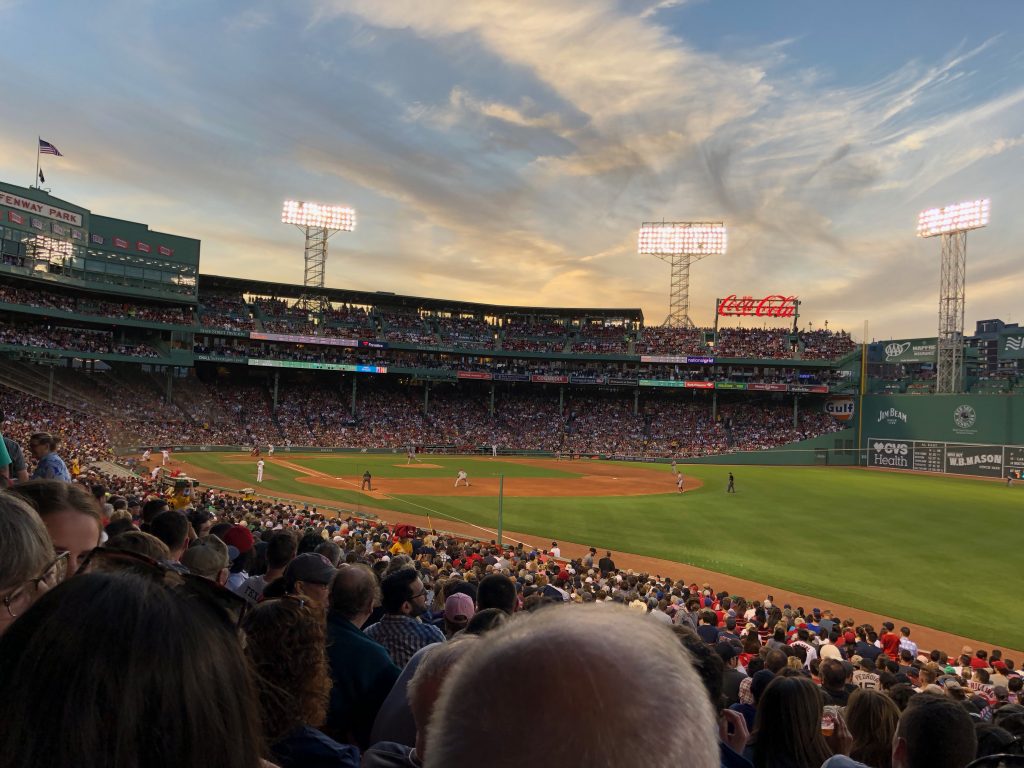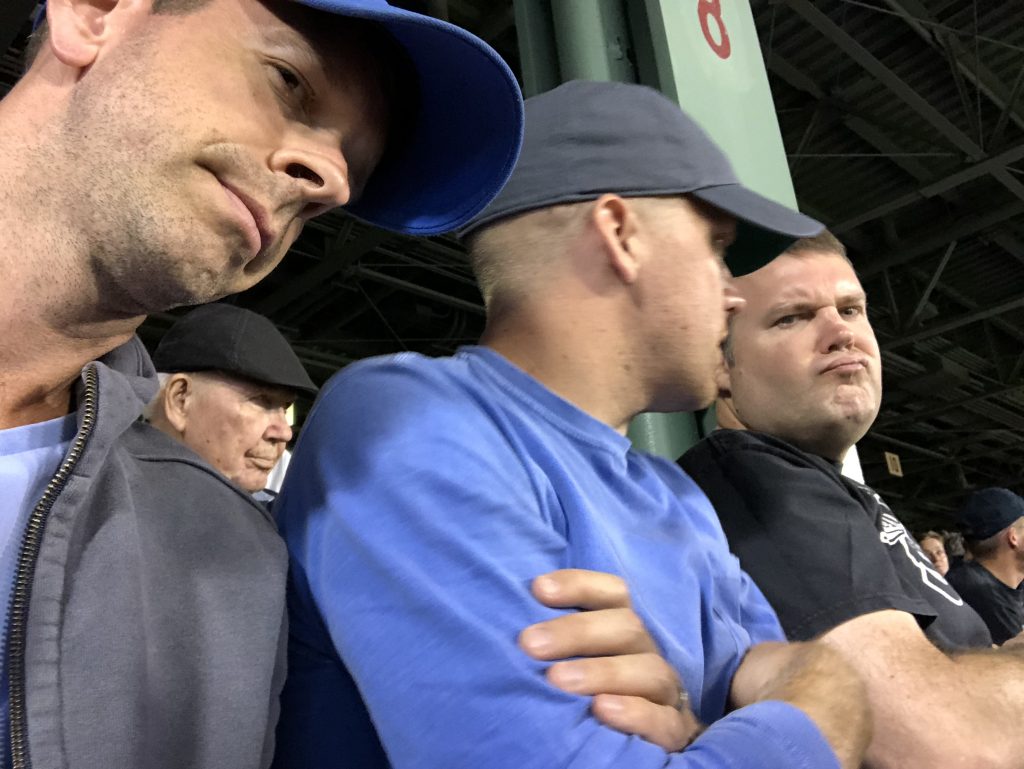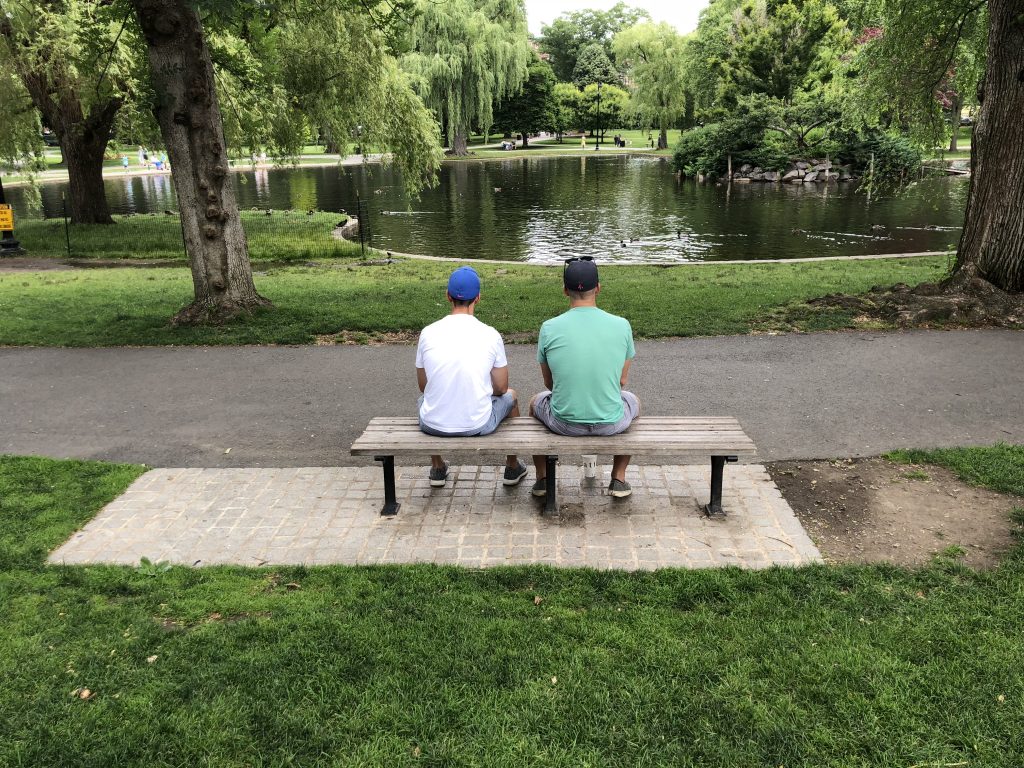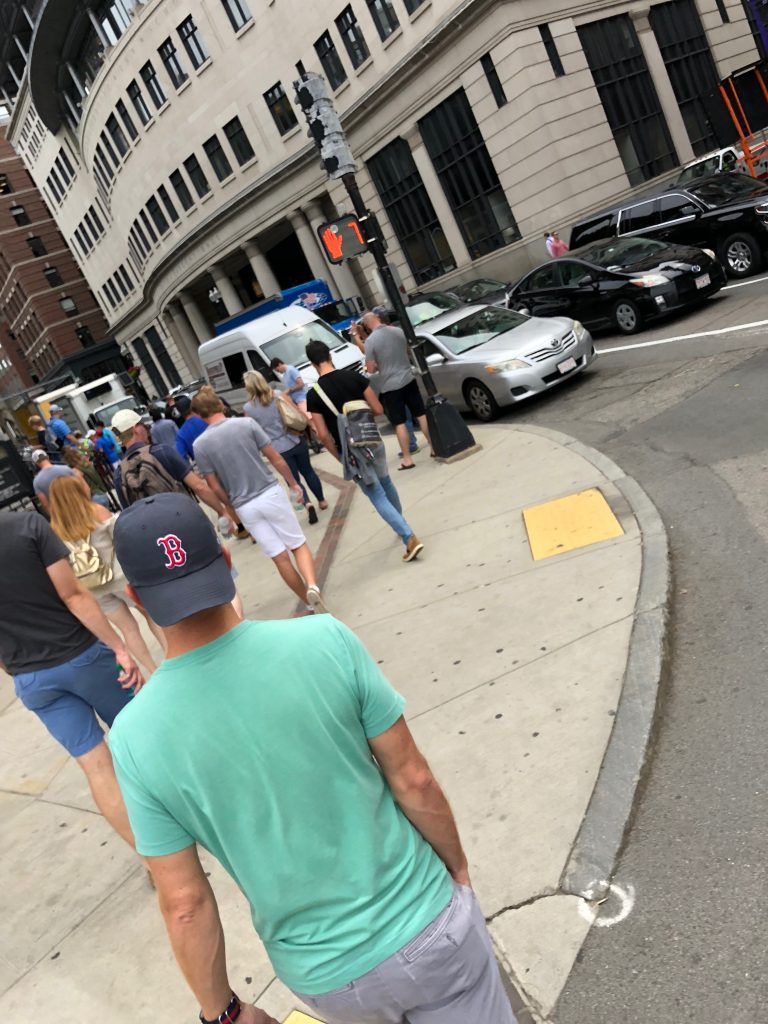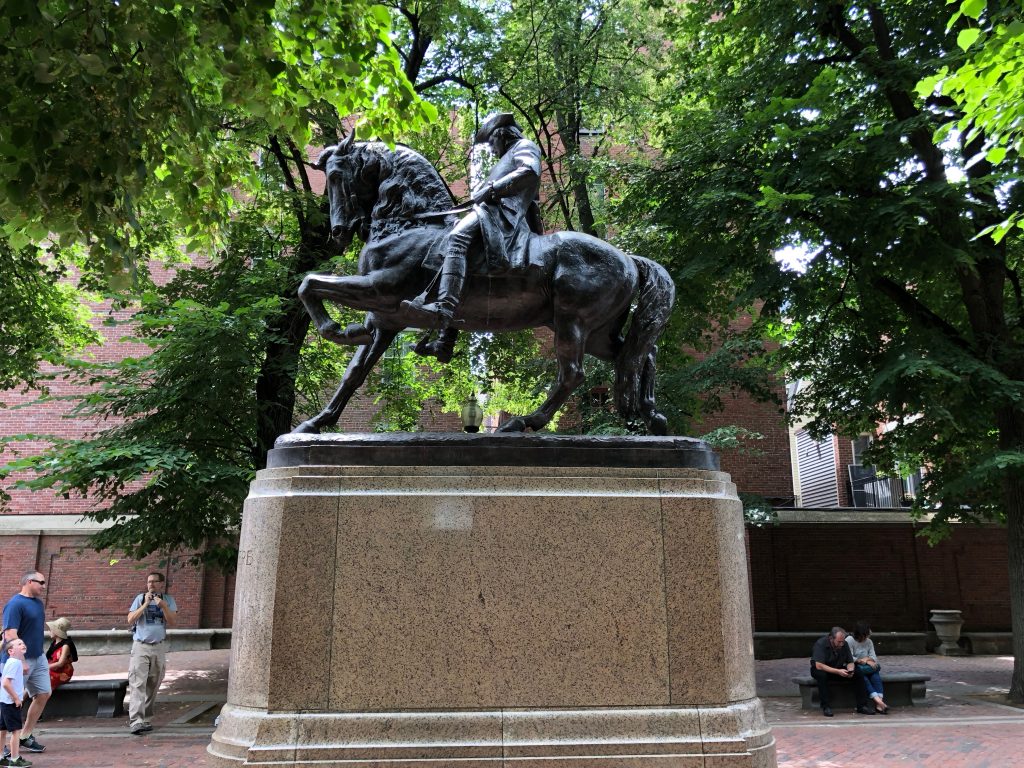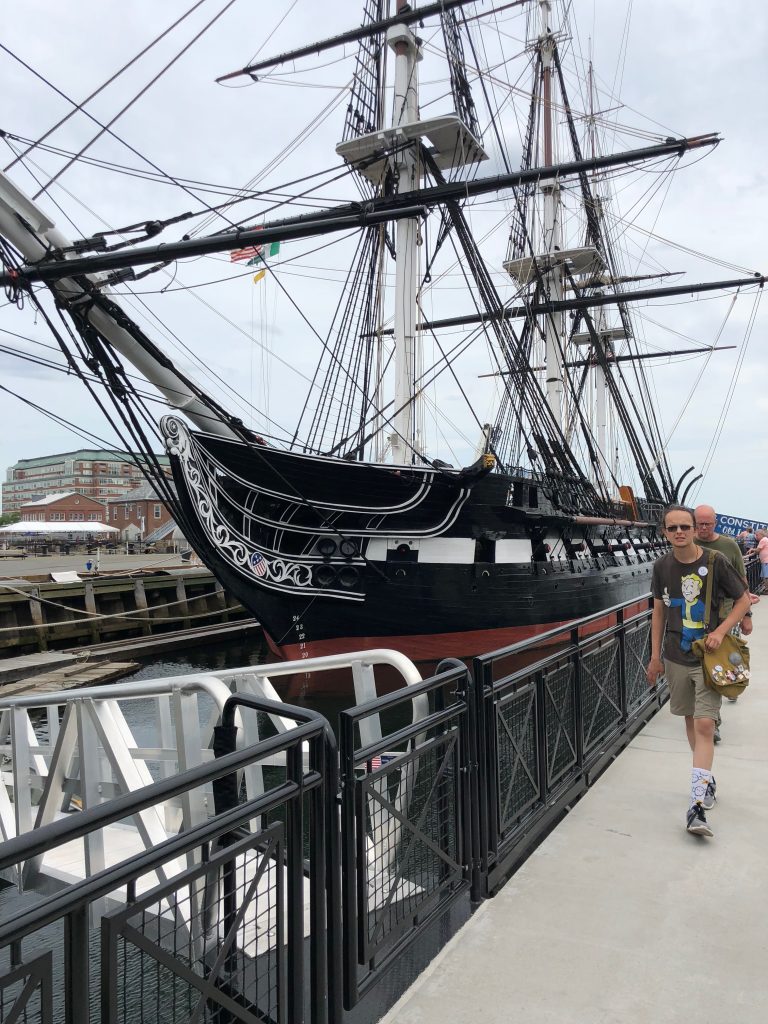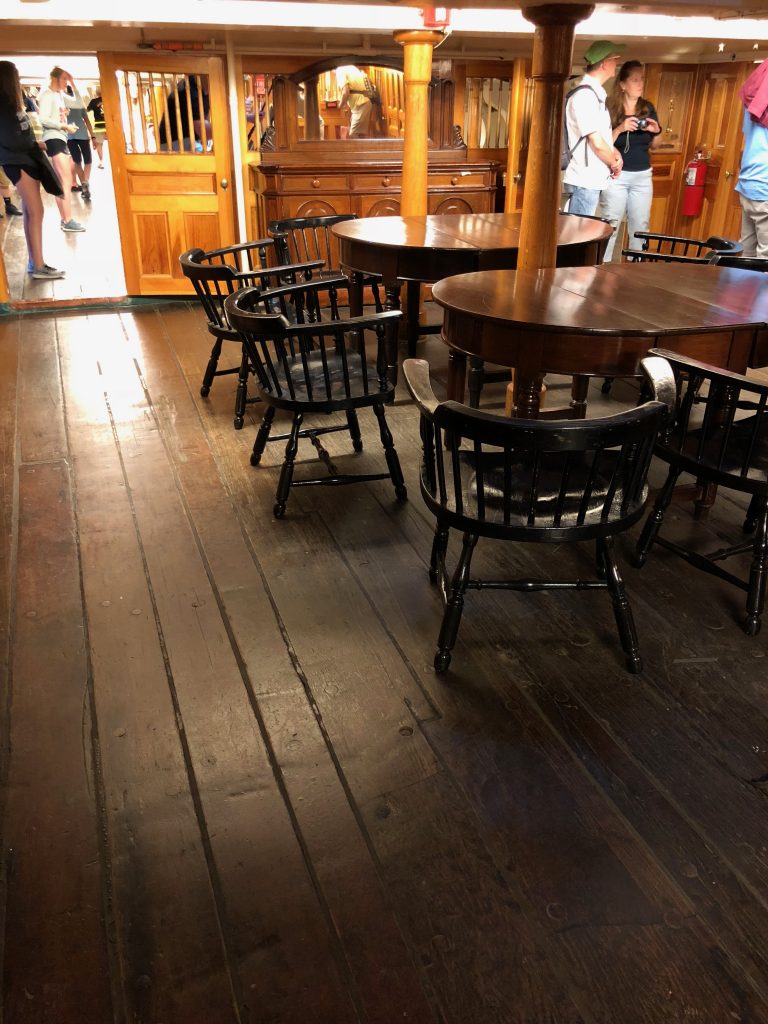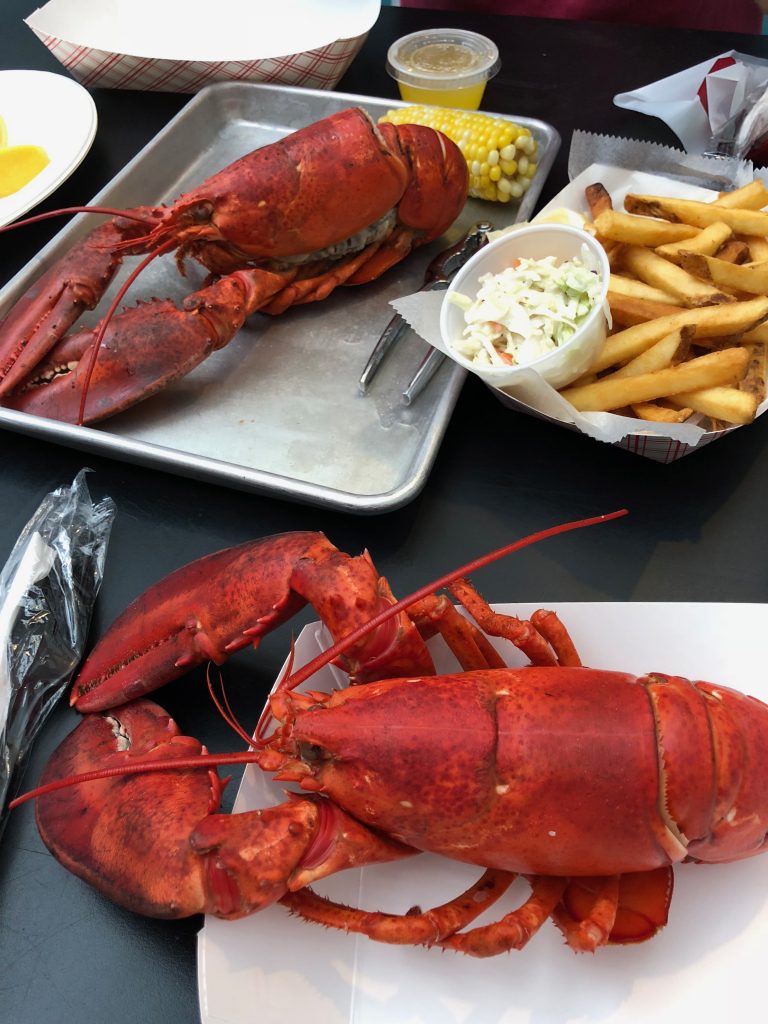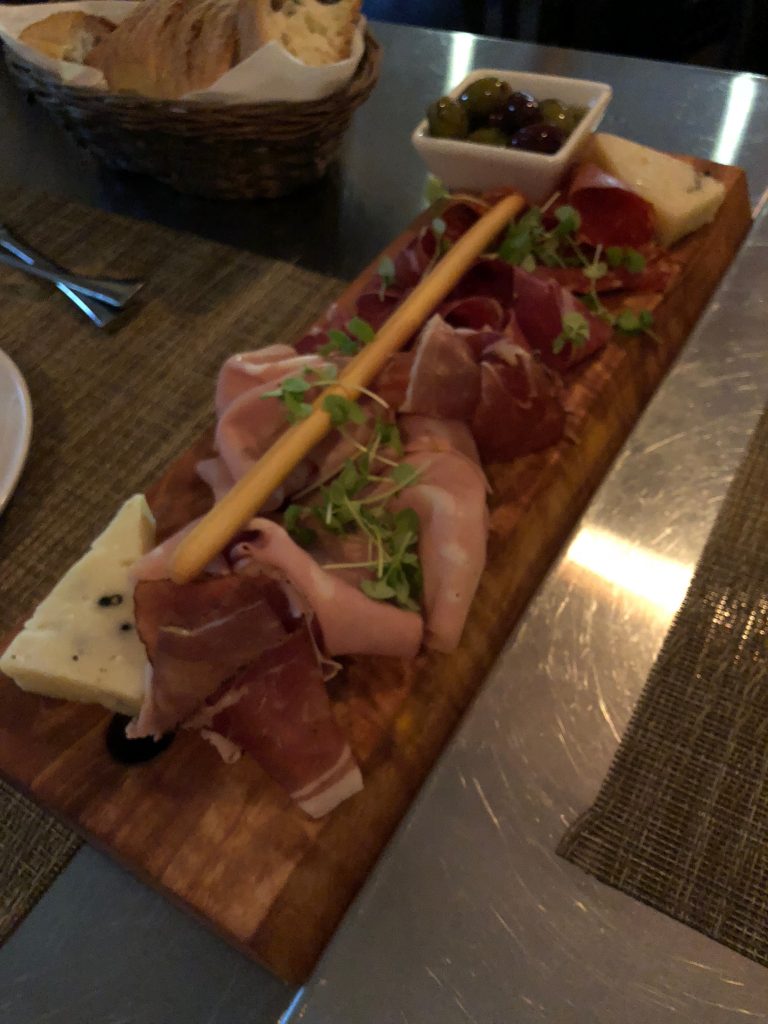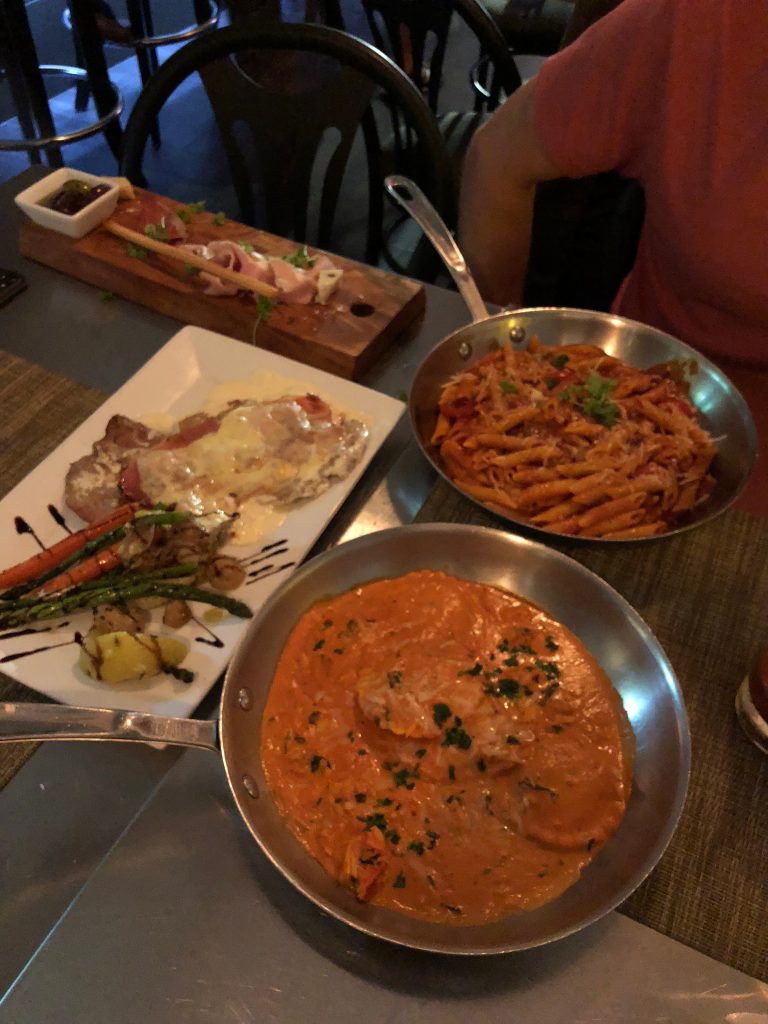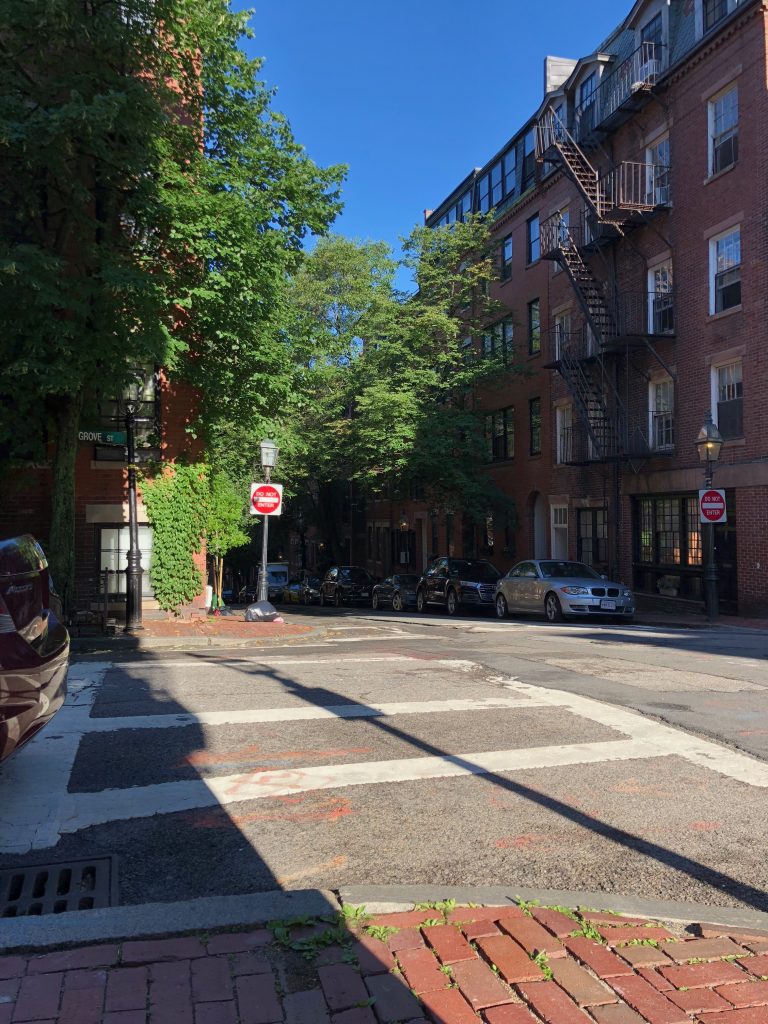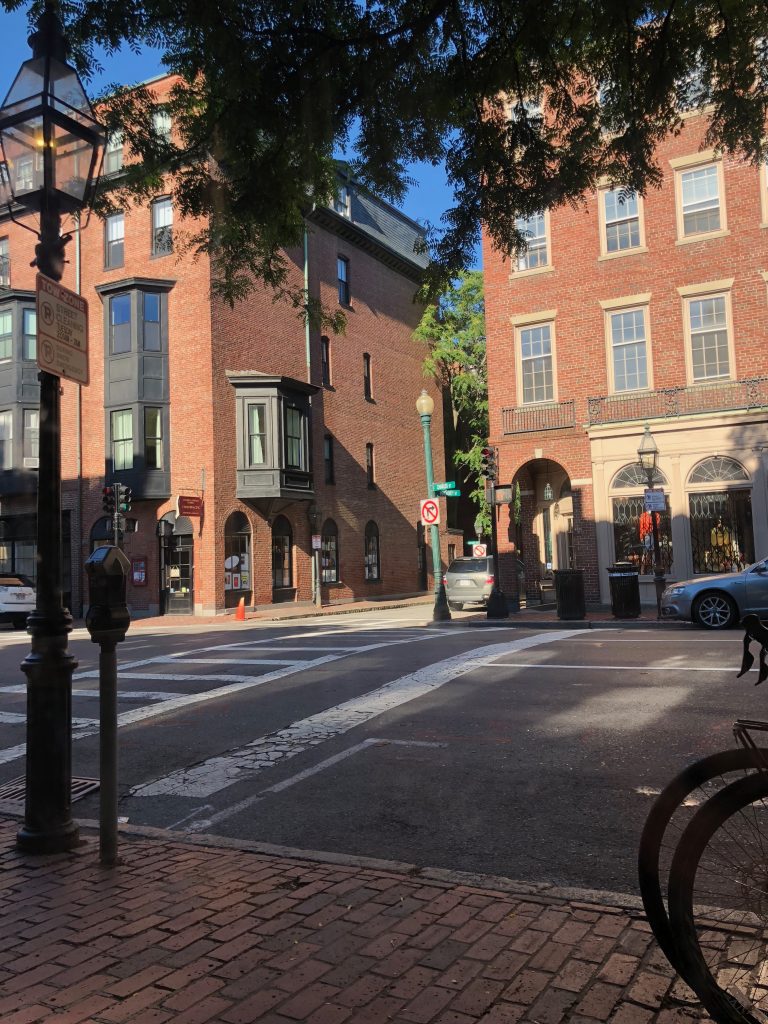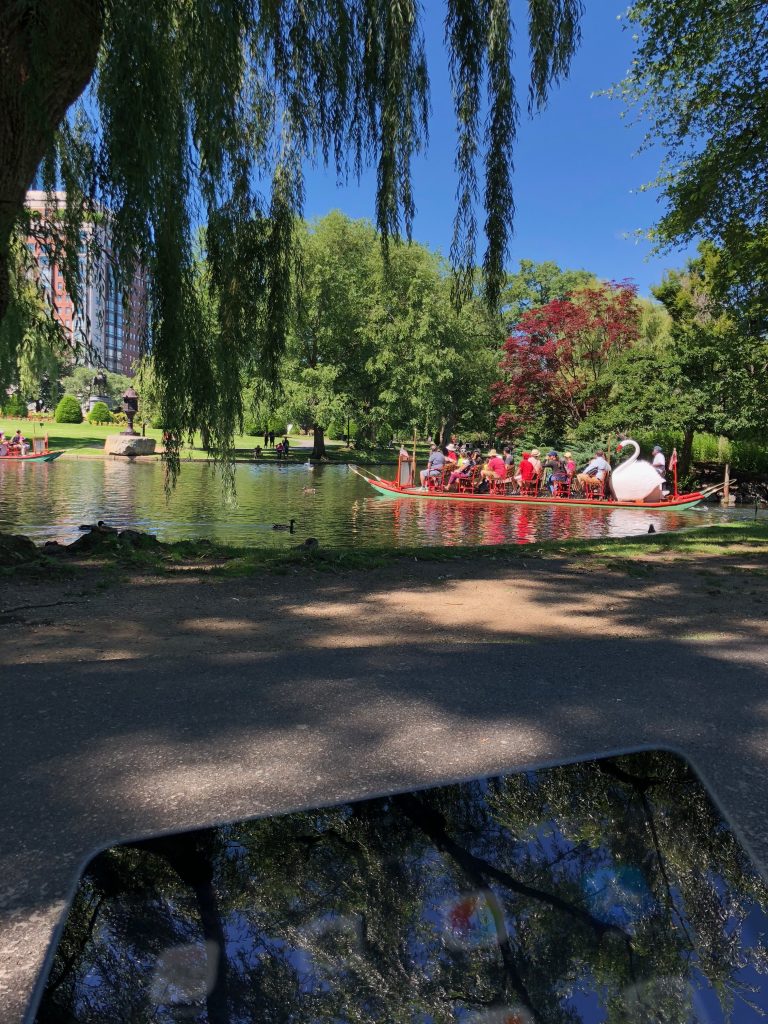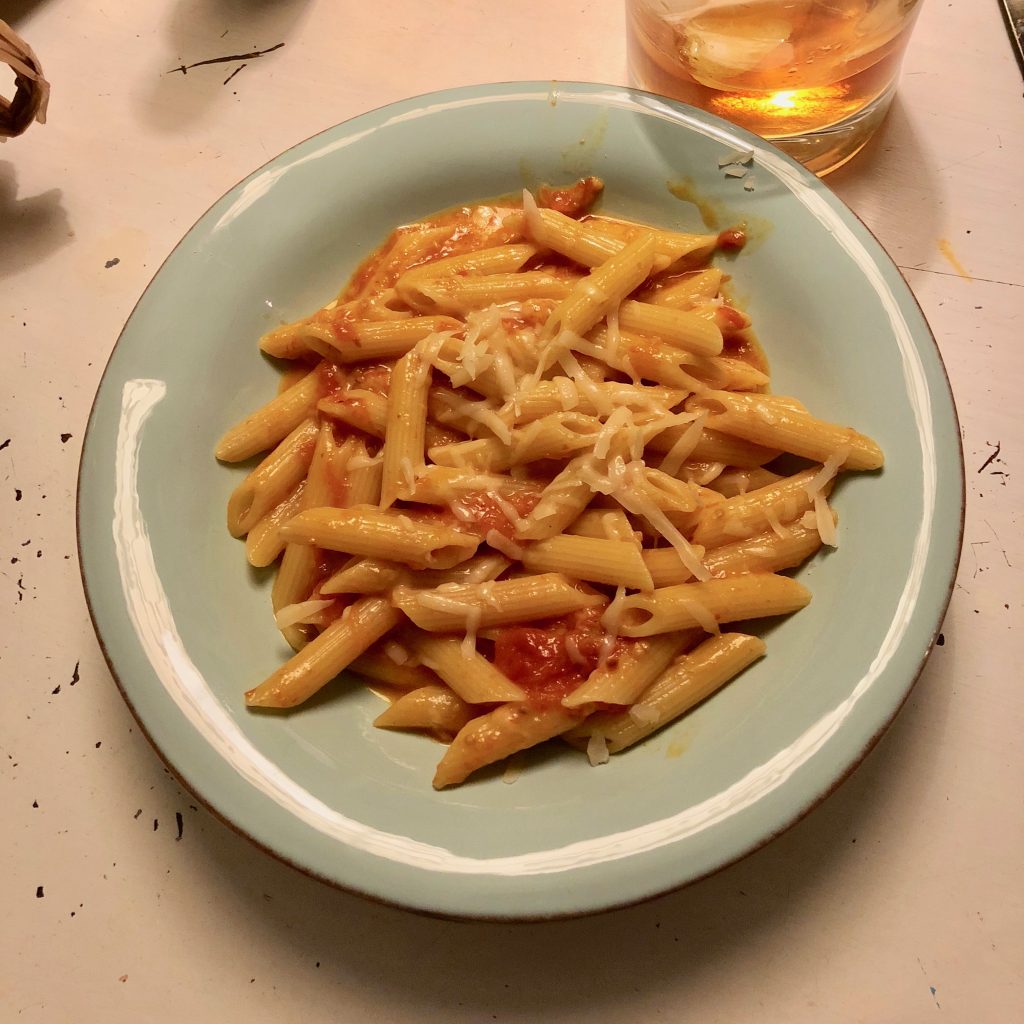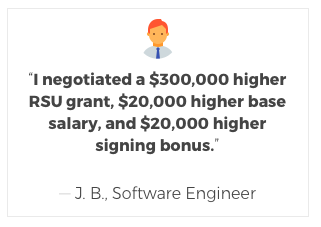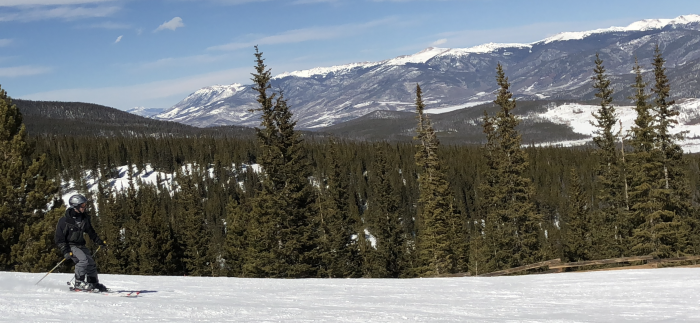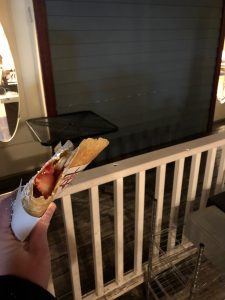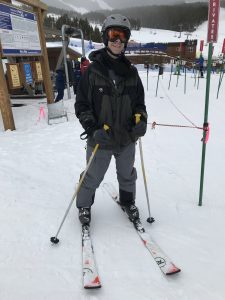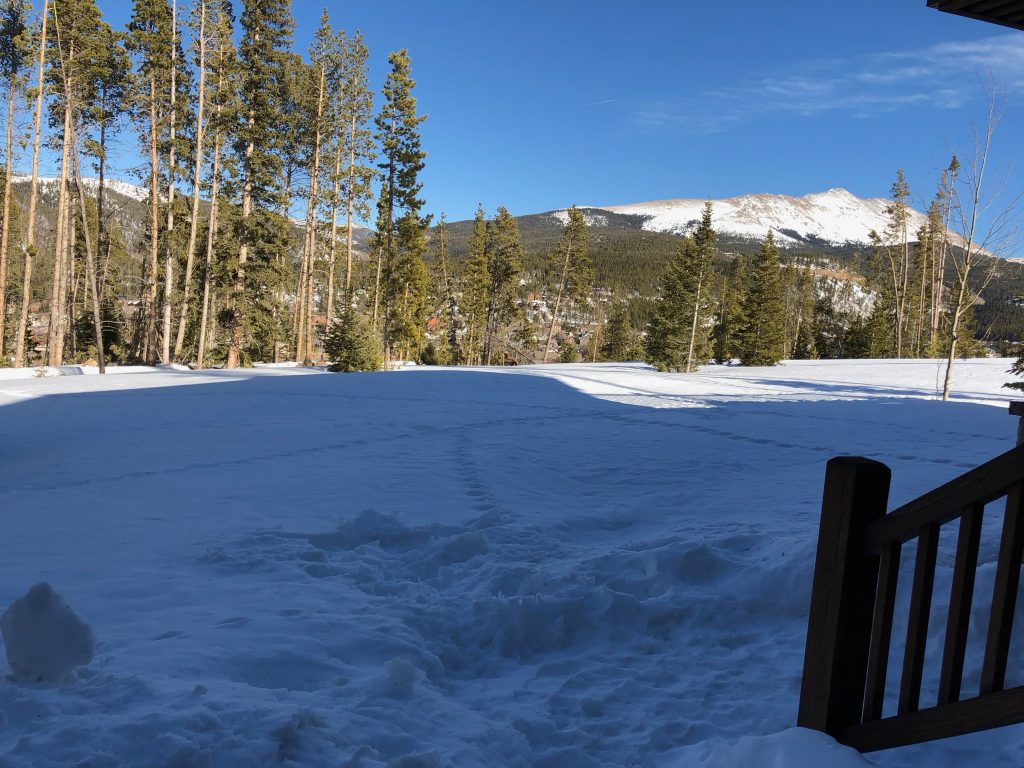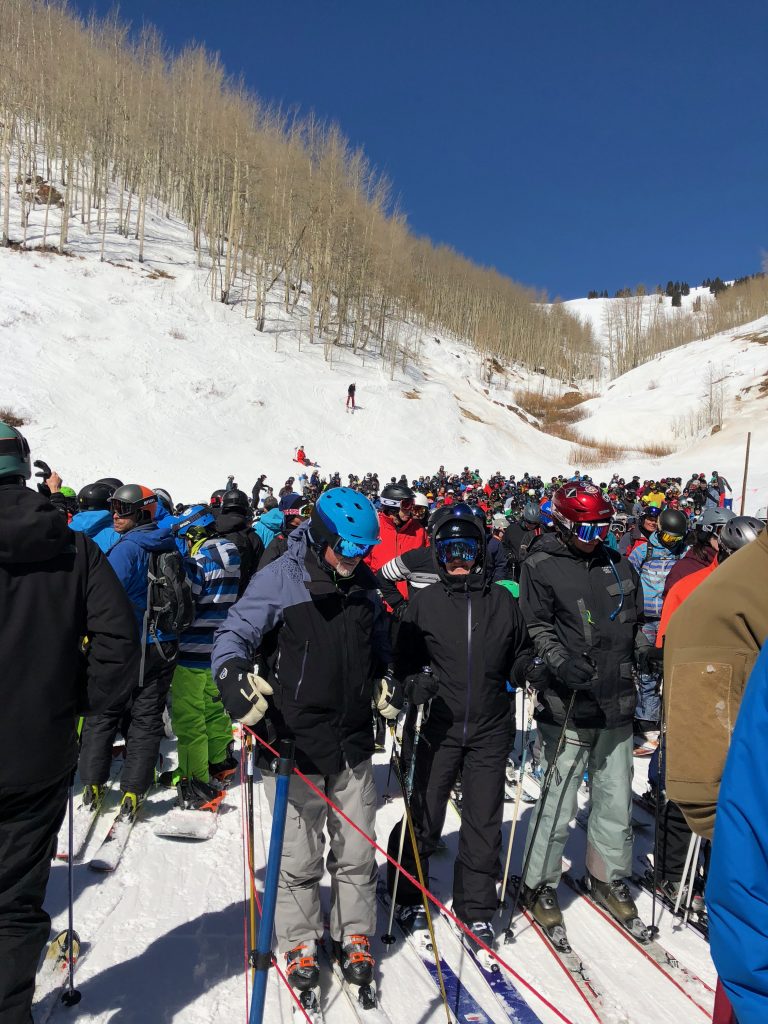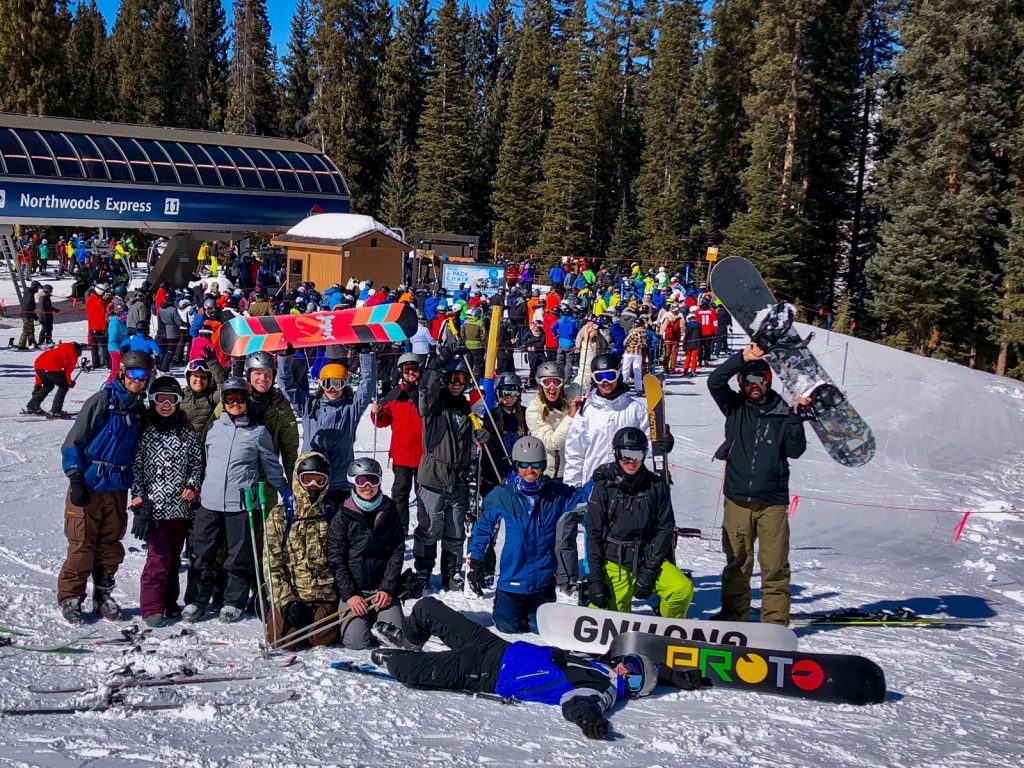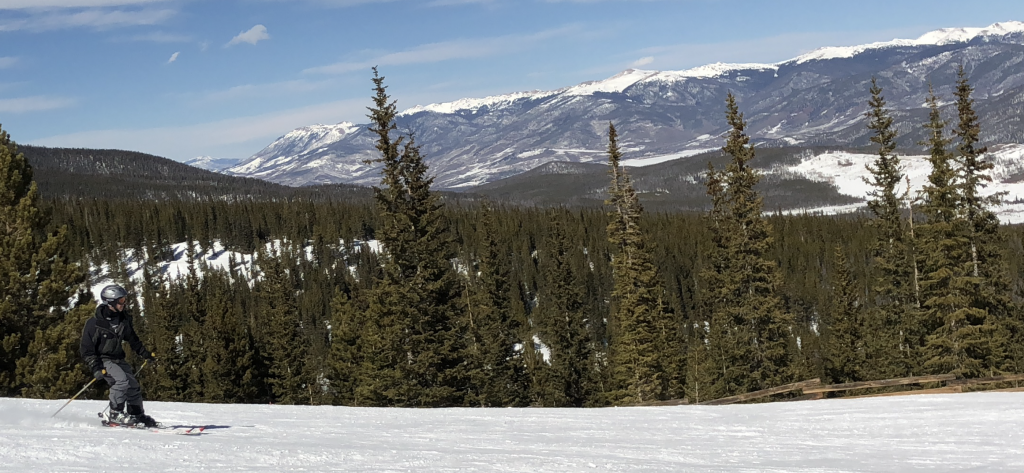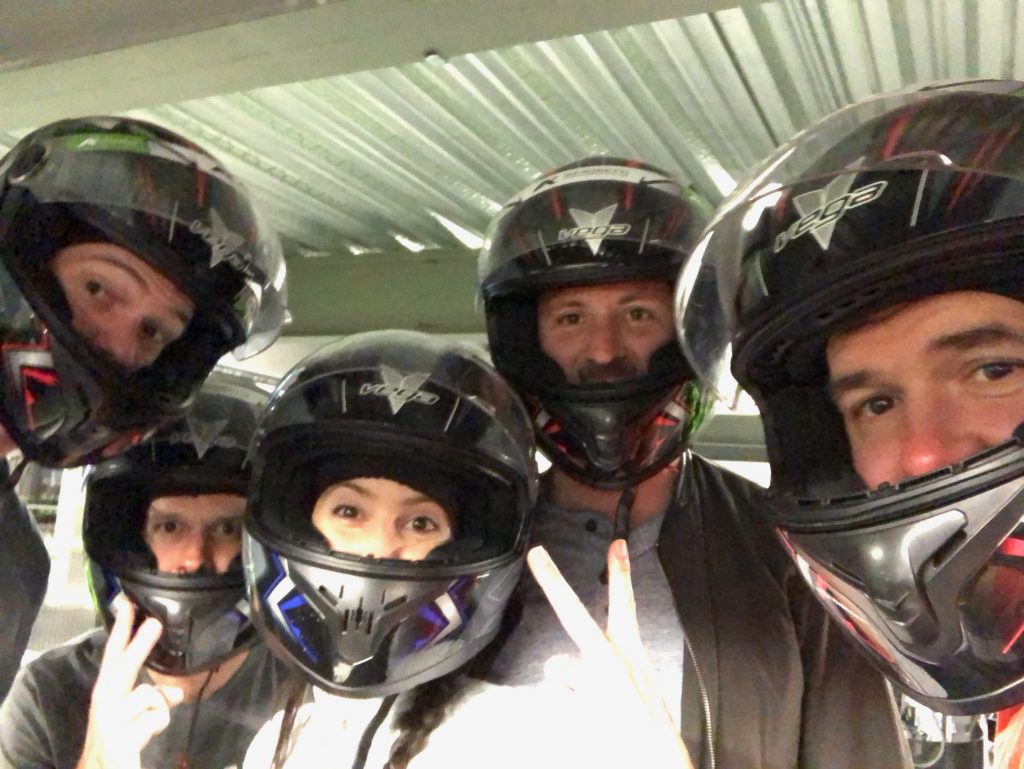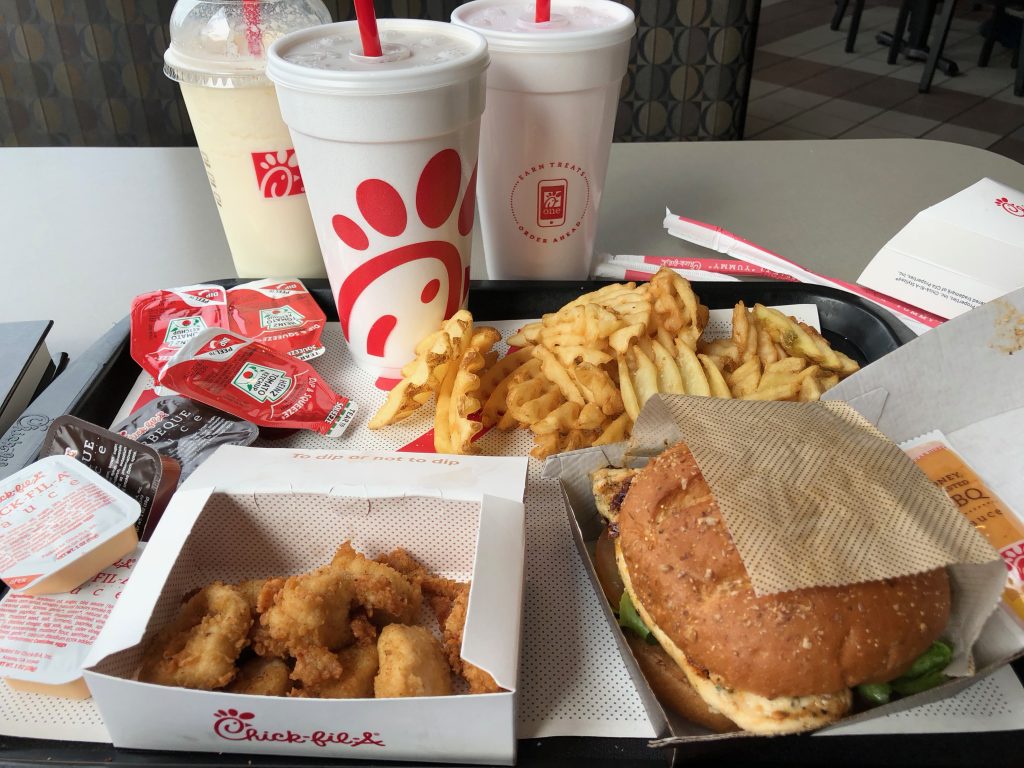In May of 2017, my business was in real danger. I had finished 2016 on a high note, finally breaking even for a few months in a row. But revenue began to slow in January, and my savings account was shrinking. I cautiously began looking for day job opportunities or something to bring in a little revenue while I figured out how to bring my business back from the brink.
One night, I mentioned this to a friend, and we talked strategy for several hours. Long story short, I needed to shift my focus to coaching as quickly as possible.
The next day, I flipped some switches on FearlessSalaryNegotiation.com, updated my onboarding emails to emphasize coaching, and formally narrowed my positioning to “Salary negotiation coach who helps software developers get more high-quality job offers and negotiate higher salaries.”
June was my best month ever and I was cautiously optimistic that I had finally found a formulate that worked. July was strong and so was August. September was even better than June, and I knew I was on to something. Closing out 2017, the streak continues: Every month since May of 2017 has been better than any month through May of 2017.
I’m finally making a living and it’s an enormous relief.
Here’s a Table of Contents so you can jump ahead if you want:
2017 Goal Review
Let’s start out with a look back at my 2017 goals.
Make fewer new products, more new sales
I did pretty well on this one. The new products I made were all versions or subsets of previous products. And all of them were designed to test my own theories about how I could best help people in their current situation.
Focus on helping developers
I did really well on this for coaching, and totally failed for products.
My business has two primary revenue streams: coaching and products. My coaching is positioned specifically for Software Developers (the headline is “Software Developers: …”), and that’s where most of my revenue comes from. I haven’t niched down products because I don’t quite know how to do it given the volume of traffic my site gets from organic search (mostly Google).
Fearless Salary Negotiation was initially written for W-2 employees who want to get paid what they’re worth. So the articles on FearlessSalaryNegotiation.com are deep dives into my strategies and tactics, which are mostly job-agnostic. That makes it tough to niche down my product focus because so many people who could be helped would think, “That’s not for me.”
I’m working on this now.
More traffic
My goal was 100,000 visits from organic search per month, and I missed this goal by quite a bit. I’m currently a little over 50,000 organic visitors per month.
It would have been a stretch to make this happen, but I think I could’ve done it if I moved it up my priority list. The reason I didn’t do that is I realized “more traffic” is meaningless if that traffic doesn’t turn into customers. So I switched my focus from “more traffic” to “more email subscribers from existing traffic” and now to “more customers from email subscribers”.
I’ll loop back on traffic some time in 2018 as a natural part of optimizing different areas of my business.
Make a decent living
Check! I’ll write more about this later on.
Finally finish my audiobook
Fail. I tried to make a push early in the year and even tried to hire someone to help me finish editing it. But that person stopped replying to emails and I lost steam editing it and just sort of let it languish. I’m not even sure how much revenue this would drive, so it’s basically a bucket list item to “Publish an audiobook” at this point. That’s not a strong motivator for me, so I’m not sure when this will get done.
2018 Goals
If 2017 was the year I made a living, I want 2018 to be the year I make a good living from what I’ve built.
Before I quit my day job, I was making a good living. I had a good job on a good team at a good company, and it was a nice life. But I wanted to know if I could build something on my own, and specifically I wondered if I could capture more of the value of my own abilities by doing my own thing.
I don’t talk about this much, but the investment I’ve made in building this business is pretty substantial, especially in terms of opportunity cost. I understood that going in, and it was a risk I wanted to take because the potential upside of learning how to build a profitable business with my skillset could be substantial.
I say all that to emphasize that I did not quit my day job to “do ok” or even “make a living”—I was already doing that. I quit my day job for a shot at making a much better living than I could as a W-2 employee capturing only a small fraction of the value I created. I’m over-explaining this because I realize this next goal may sound greedy, and shooting for even bigger goals beyond that might sound outright ridiculous. But I did not make this move—quitting my day job and starting a business from scratch—to break even. This business is an investment where I want a multiple on my return.
Make a good living
Talking about revenue is a little out of character for me. But once I get past “pay all my monthly business and personal bills with a little left over”, describing the next level of growth without using actual numbers is challenging.
So here’s a quantified goal: I want to make $10,000 per month in net revenue in 2018. More specifically, I would like to do that by selling $5k in products and booking $5k in coaching per month for the year.
This is a stretch goal because averaging those numbers for the year will be very challenging given that I’m starting below that average. But I like shooting for the average because it will incentivize me to keep pushing even if I hit those numbers for a month or two. “Yes, I hit the $10k goal two months in a row, but I need to do better if I’m going to average $10k over the entire year.”
More traffic (continued)
I would like to build my organic search traffic to 100,000 unique visitors a month. I’m currently at 50,000, so I need to double my monthly traffic to hit this goal. In nominal terms, adding 50,000 visitors a month seems like a stretch, but in relative terms, “Double my traffic in 2018” seems relatively easy compared to the growth I’ve seen over the past two years.
There’s also a risk here because almost all my traffic eggs are in the organic search basket. I will also spend some time working to add new traffic sources in 2018, but I’m not sure how I’ll do that just yet.
Improve at Sales
Selling products and services is the goal that I had in mind when I set about building the infrastructure of my business. The entire point of my book, website, outreach, and other business activities is to reach more paying customers.
My goal is that 2% of email subscribers become paying customers within the first 30 days.
This is probably my most important goal for 2018. If I hit it, a lot of other goals will be easier.
Help other businesses get more search traffic and email opt-ins
This one is less quantitative, but is something I’ve really enjoyed in 2017. Part of building a business is learning new skills, and I’ve gotten pretty good at getting organic search traffic and turning some of that traffic into email subscribers.
I can help other businesses do that. I like doing it. And it’s extremely valuable, especially for businesses with established, profitable sales funnels in place. For them, more traffic and opt-ins means more revenue.
Running goals
I set these goals after I began running earlier this year, and I’ve only gotten one of them so far.
10k – Sub-8:00 pace Hit it with a week to go!- 5k – Sub-7:00 pace (currently 7:14)
- Mile – Sub-6:00 pace (currently 6:08)
- 400m – Sub-60s pace (currently 64s)
I’m confident I’ll get the 5k and mile times eventually. I’m not sure I can do a 60s 400m, but I’m so close I have to keep trying.
These posts are normally business-focused, and this one will mostly be business-y. But this year was a lot about personal growth and experience, so I’ll talk about that too.
A detailed 2017 Year In Review – Business
This year, I focused on building on the foundation I laid in 2016. Last year’s one-sentence summary was “Build infrastructure to turn the book into a business.” This year’s one-sentence summary is “Make a living.”
The real key to 2017 was focus. Early in a new business, I think it’s extremely important to try lots of things to see what works and what doesn’t. As much as we want to believe we can engineer a perfect business, that’s just not how it works.
But once things start moving—people are aware of your product or service, you have some sales, you’ve seen a few things work for you—focusing becomes extremely important. In 2017, I focused on building my traffic, building my brand, and building my business. I avoided distractions and that was key to my survival.
Ultimately, shifting my focus from “build a robust sales funnel for my products” to “leverage my skillset and knowledge in the most valuable way possible (coaching)” was the one thing that saved my business and unlocked real growth for the first time since I started.
Products and Services
Ultimately, my business is all about offering the right products and services to the right people at the right time.
In 2017, my coaching revenue more than doubled; my product revenue more than quadrupled. When I step back and look at my business, those are both extremely encouraging signs, especially considering I feel there’s a lot of untapped potential within the infrastructure I’ve built.
Coaching
In June, I turned my focus to booking coaching clients and it paid off in a big way. I’ve worked with clients negotiating with the Big Five (Apple, Amazon, Facebook, Google, Microsoft) and many other big names. My portfolio speaks for itself, and I’m learning how specific in-demand firms negotiate their job offers. This knowledge is extremely valuable and I am starting to capture the value of the knowledge base I’m building.
I have also begun working with a new niche: graduating physicians. I initially started doing research to write a book for them, but I think the best way to start is to offer coaching. The common wisdom is “doctors’ contracts aren’t negotiable”, but that’s simply not true. Not only are they negotiable, but the value of negotiation is tremendous—even more than software developers in some cases.
The 15-Minute Counter Offer
I’m pretty sure I only created one new product in 2017: The 15-Minute Counter Offer. It was a companion product for the free email templates I give away on my site. I was curious if people would pay a little bit for more help writing their counter offer email, and it turns out they would.
This is slightly different than products I’ve created in the past. Those products were explicitly designed to make money. This product was designed as an experiment to learn more about how I can best help my audience. It’s subtle, but this shift belies a move from “try to make some money” to “optimize my business”.
The Salary Negotiation Crash Course
The Salary Negotiation Crash Course is a focused version of Fearless Salary Negotiation that is designed to help folks who already have a job offer become effective salary negotiators in less than 90 minutes. This is a good product, and it’s also an experiment as I learn more about the best way to offer valuable help to people who are looking for salary negotiation advice.
Stats!
It’s useful to track stats over time, so I’m going to look back at most of the stats I tracked last year and add a few new ones.
Traffic
This was a huge focus for me in 2016. I kept working on it in 2017, but not as intensely as last year. The reason is that I realized I had enough traffic that I should be able to do something productive with it if I would just optimize some things.
Before we look at 2017’s traffic, let’s look back at 2016:

Not bad! Now let’s look at 2016–2017 for perspective:

First, you can see that things are still improving pretty quickly. Second, you can see that I took it easy mid-year because I was focusing on other business priorities.
As an aside, I’m finding that building a business as a solo founder is really just focusing on one thing at a time until it’s time to focus on something else.
In my case, I got to a level of traffic where I thought, “It’s worth my time to focus on turning traffic into email subscribers. If I can make a meaningful improvement to my opt-in rate, I can grow my email list really quickly.”
So I turned to optimizing my site to turn all that traffic into more email subscribers. This was a wise move.
My email list
Subscriber growth really picked up this year as I got more traffic and increased the opt-in rate for my site. Here are the subscriber counts at the end of the last three years:
- December 2015: ~700
- December 2016: ~2,500
- December 2017: ~11,500
Here’s a graph of my subscriber growth for 2017:
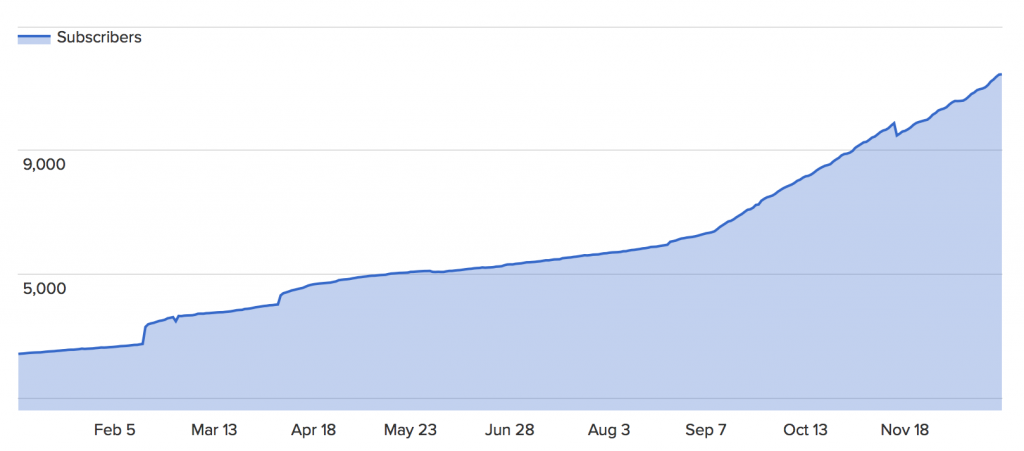
You can see the hockey stick in September. That was the result of finally making a change I had been thinking about for months: I moved my free email templates behind an email opt-in form. That one-hour change quadrupled my site-wide opt-in rate.
I’m getting about 2,000 new subscribers a month now.
I want to pause on that number for a minute to put it into perspective.
The entire year of 2015, I got 700 email subscribers. SEVEN HUNDRED. I typically get that many new subscribers every 10 days now. I remember the first month where I had at least one new subscriber a day (October 2015), and that was a huge milestone for me. Now my slow days are around 30.
Conversion rate
This is a new stat, which logically follows the email list stats. By conversion rate, I mean, “How many of my email subscribers become paying customers in the first 30 days?” For me, the answer is embarrassingly low: Around .7%.
And it’s actually not even that good because that number is propped up by a couple experiments I did with extremely low-priced products. It’s probably more like .4%.
My 2018 goal is to improve conversion rate to 2% within the first 30 days.
Overall funnel
If you haven’t already noticed, I just described my “funnel”:
Traffic -> Email opt-ins -> Conversions
50,000/mo -> 2,000/mo (4% or so) -> .4%
Here’s where I would like my funnel to be by the end of 2018:
Traffic -> Email opt-ins -> Conversions
100,000/mo -> 5,000/mo (5% or so) -> 2%
If I hit those stats by the end of 2018, I should be able to hit my revenue goals.
Leveling up my credibility and profile
This year was huge in terms of publicity. I published several articles on Glassdoor.com and was interviewed live on international TV for the BBC News. The tick-tock of my BBC interview is pretty interesting as it was less than two hours from start to finish.
My work was published or syndicated on Business Insider, Fast Company, The Motley Fool, CNBC, MSN, Yahoo! Finance, AOL, The Telegraph, Forbes, Quartz, The Muse, Monster.com and lots of other sites.
You can see a running list on the FearlessSalaryNegotiation.com media page.
These opportunities have significantly raised my profile and given me a credibility boost that is paying off for my business.
A detailed 2017 Year In Review – Personal
This may sound crazy, but it’s true: Starting in 2009, I basically worked 7 days a week until the end of 2016. I got into that routine because I was working full time while also studying for my MBA. I would work at my day job during the week, then use weekends to do whatever needed to be done for my MBA.
That lasted until I finished my MBA in 2011. As soon as I finished my MBA, I quite my day job for 8 months. Ironically, I worked more during that 8 months because I was playing a lot of poker, writing my first book, and learning how to build web apps. It was a busy year and I worked some very, very long days and weeks in 2011.
I went back to work full-time in 2012, but I was building ShareAppeal (my first web app) and finishing Heads-Up Tournament Poker while I worked full time. We published Heads-Up Tournament Poker in 2013, but then I started working on TaskBook, which was a nights and weekends project.
I switched jobs in 2014 while I was still working on TaskBook, and then I started writing Fearless Salary Negotiation in December 2014 while still developing TaskBook (my second web app).
I quit my day job (again) in September 2015 to focus on publishing Fearless Salary Negotiation, and then began building that business in 2016 after the book was published. Throughout 2016, I was doing the hard work of building underlying infrastructure to run the business, and that work is pretty much a “volume of effort in correlates directly with results out” situation, so I worked long days all year.
2017 had to be different
But moving into 2017, something had to give. I had chosen to invest my time to learn how to build businesses and eventually become independent. But what was the point of being independent if I spent literally all of my time working? Yes, hustle is necessary to get something up and running, but eventually the hustle has to give way to something better than a 9 to 5.
So as 2016 wound down, I made a conscious decision to stop working so much and start enjoying the freedom I had earned by going independent. What did that look like in 2017?
I began working less and started leaving my laptop in my office at the end of the day. I had more energy because I was working less, so I got off my couch. I went from sporadically attending church to consistently attending. I joined a community group. I started spending more time with my friends just for the sake of spending time with them. I made new friends. I joined a running club and found a new hobby.
Am I a runner now?
My diet is typically pretty awful around the holidays. There’s like six weeks of non-stop snacks and big meals, and then I almost always get a truckload of candy for Christmas. I take on the truckload of candy as a personal challenge, so I eat even more candy than normal for the month of January.
And, uh… well the point is I typically gain a few pounds between like Halloween and February 1. This year, someone said, “Hey, we have a running club that meets once a week to do track workouts. You should come!”
Normally, I would’ve said, “I don’t run.” But the Florida winter was unusually mild and I had a few pounds to shed, so why not?
I’ve never been a runner. The longest I had ever run before this was six miles and that was an awful experience that took me over an hour. I had also run a few miles here and there in college, but it never became a real thing.
There were four to eight of us of us at most of the track workouts. I did not have fun at first—those workouts were extremely difficult for me. I had never done a track workout before, and it took some time to adjust.
But by April, I ran my first 10k race at a 9:00 pace and I actually kind of liked running.
Now I consistently train three days a week, mixing up track workouts (sprints) and medium-distance runs (3–5 miles). A few days ago, I finally achieved the first goal I set this year—I ran a sub-50:00 10k. It felt really good. (Emotionally, I mean. Physically, it was pretty awful.)
I’m also lifting weights three days a week. I’m in the best shape of my life and I can eat a lot more junk with all this running.
Time with people
I’m naturally pretty “introverted”. (Those air quotes are to acknowledge that this term may or may not have any real meaning.) I like to sit on my couch and watch TV or read. It’s pretty draining for me to hang out in groups.
Before this year, I had been working so much that sitting on my couch was my go-to down-time activity. While it was comfortable, it wasn’t healthy, and I decided to change that. Spending less time at work meant I had more energy for hanging out, and hang out I did.
I made a ton of new friends this year and sort of re-entered the social world. I went to Charleston to run a 10k race in April. Spoke at MicroConf later that month. Had a pretty good #SummerOfFun to take advantage of the Gainesville Summer Lull. Split my 4th of July time between a boat and the beach and barely survived a crazy storm. Carved a pumpkin and dressed up like Charlie from Wonder Woman for Halloween. Went to some Gator football, basketball, and volleyball games. Had lots of great dinners with friends. And finished the year off by watching a dozen Christmas movies with friends.
I also spent a lot more time with my family this year, and it was fantastic. No big trips or anything, just small opportunities to have a meal or catch a movie every now and then.
It was a good year.
